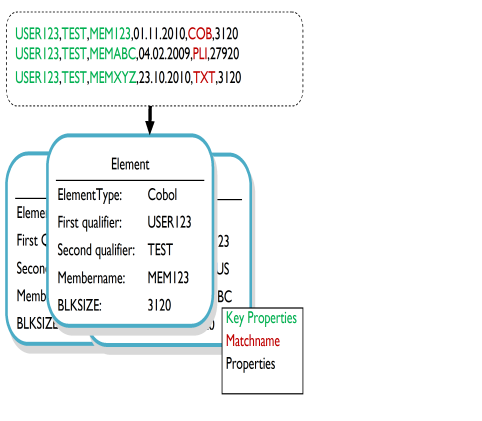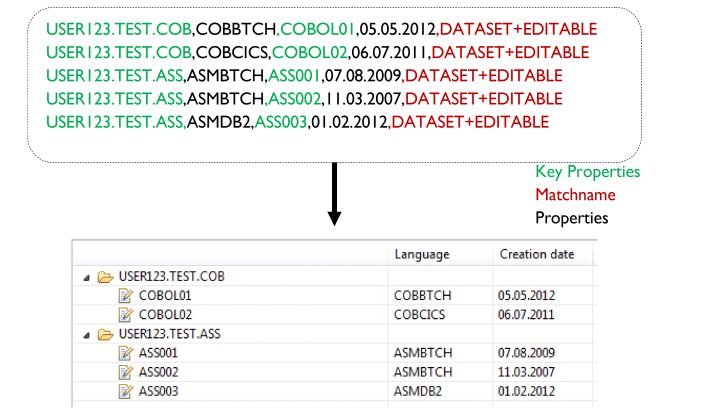





Actions that generate new element lists will be defined by a reference in an element list structure by an action descriptor. Note that precisely one tool must output one file, in which all the elements for the element list are contained. If several tools of an action return a file descriptor, the last one will be used for element list creation.
Additional string output parameters returned by the tool which creates the element list will be added as element list properties to the list.
The output file must contain as a minimum all values of the key properties (see ID has Key Property) and the match name (see Element type) of the corresponding element type. If the element list should be represented in the form of a tree table, you must return the hierarchical tree structure in the match name by concatenating the match names of the element types which define the tree. The concatenation sign between the match names is the + sign. In this case, the output file must contain all values of all key properties of all element types which are referenced by one of the match names in the match name concatenation.
This means you can’t define an element type match name containing the + sign. If a tool returns a match name containing a + sign in the element type property, the tool result will always be represented in the form of a tree table. Each segment of the concatenated match name separated by the + sign is interpreted as element type match name.
Additionally, output property values can be assigned to the corresponding element and be shown in the table if these properties have also been assigned to the element type. Every line of the output file will be interpreted as a string of property values for an element.

Here is another example for a tool output which is represented in the form of a tree table:



